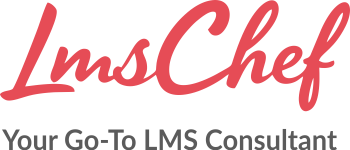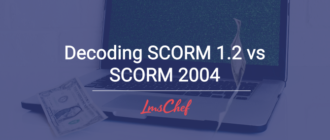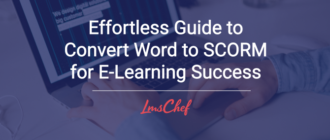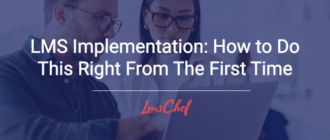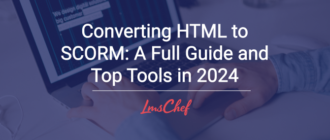Wondering what is SCORM 1.2? Simply put, it’s the rulebook for e-learning interoperability. It allows various online courses and learning platforms to speak the same language. This introduction cuts through the jargon to give you a straightforward glimpse into how SCORM 1.2 impacts your e-learning experience, with practical insights into its structure and functionality.
Key Takeaways
- SCORM 1.2 is a set of eLearning standards ensuring compatibility and interoperability among eLearning courses and Learning Management Systems (LMS), focusing on content packaging, runtime, prerequisites, and sequencing.
- SCORM 1.2 packages contain learning materials and a manifest file detailing course content, utilizing SCORM API and tools to enhance accessibility and maintain structured learning paths.
- Despite its contribution to standardizing eLearning, SCORM 1.2 has limitations in compatibility, interactivity, and scalability relative to advanced versions like SCORM 2004, affecting its suitability for certain learning contexts.
Demystifying SCORM 1.2: The Basics
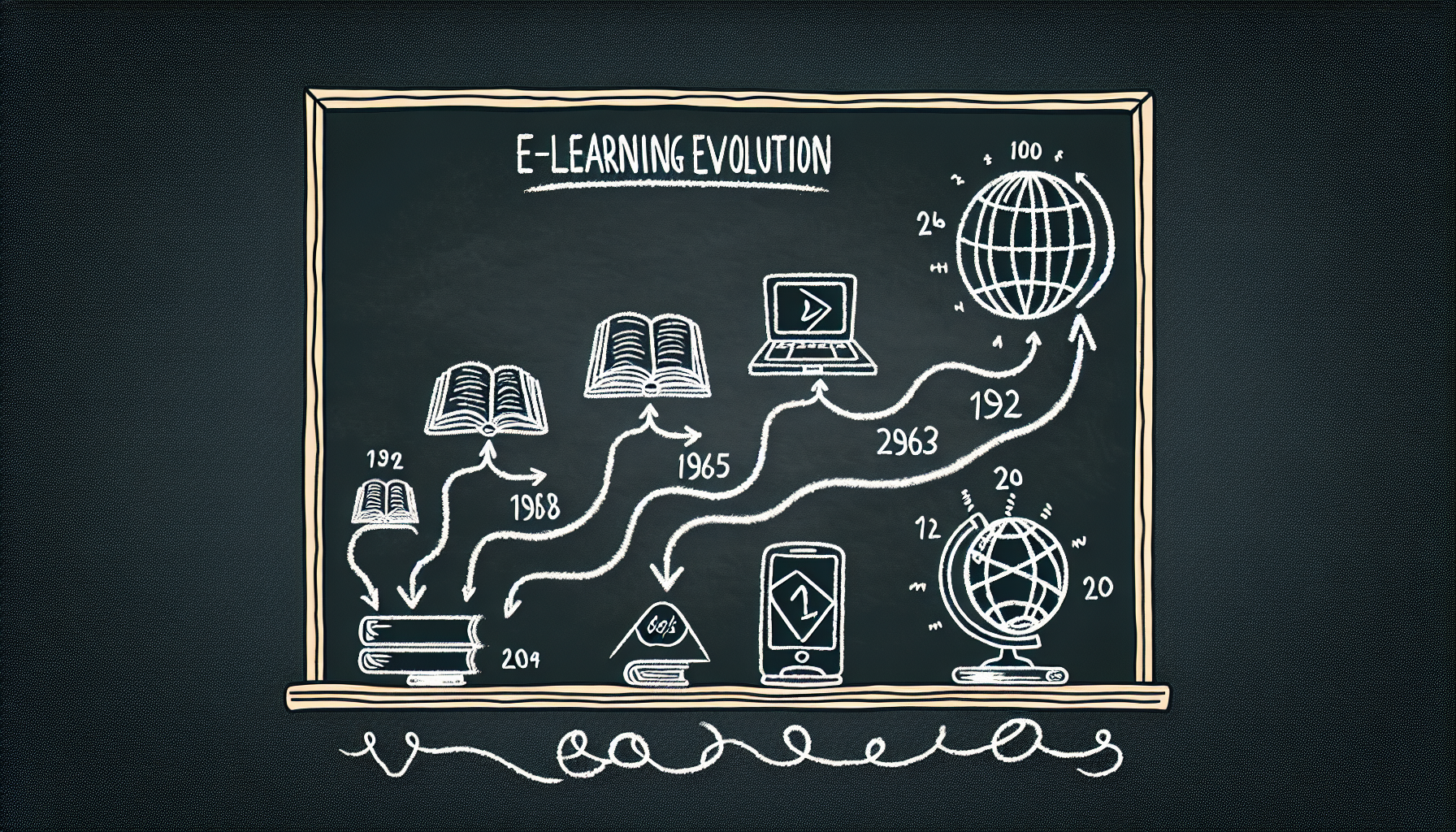
Imagine SCORM 1.2 as the backstage crew in a theater. You may not see it directly, but its role is essential in delivering a seamless performance. SCORM stands for Sharable Content Object Reference Model, a standard developed by the Advanced Distributed Learning (ADL) Initiative in the late 1990s. Its primary function is to standardize how eLearning courses are created and launched, making it an unsung hero in the online learning sphere. By utilizing a content aggregation model, SCORM 1.2 ensures consistency and interoperability across various eLearning platforms.
The idea for SCORM 1.2 was born out of the need for a common language for eLearning content, ensuring that learning material from any content vendor could be readily imported and used by any SCORM conformant Learning Management System (LMS). Over time, it has transformed online learning by standardizing the communication between online learning content and LMSs, thereby simplifying the creation and delivery of eLearning courses.
Technically, SCORM 1.2 encompasses a specification for:
- Content packaging
- Runtime
- Prerequisites
- Sequencing of learning content
This makes it easier for instructional designers to create e-learning courses compatible with SCORM conformant LMSs. We’ll now delve into a more detailed understanding of SCORM’s purpose, origin, and technical makeup.
Defining SCORM and Its Purpose
SCORM, in essence, is a collection of eLearning specifications and standards, designed to ensure that eLearning courses and LMSs can communicate effectively with each other. SCORM tackles e-learning challenges by providing a structured framework for developing LMSs and training content, ensuring compatibility with other SCORM conformant systems.
It also facilitates the sharing and repurposing of training content across various courses, thereby enhancing interoperability and standardization of e-learning content.
The Genesis of SCORM 1.2
The seed of SCORM 1.2 was planted in the late 1990s by the ADL Initiative. The primary motivators for developing SCORM 1.2 were:
- To offer consistent training for a global workforce
- To improve organizational service delivery
- To enhance the quality of e-learning content
- To ensure compatibility with products from multiple vendors
However, the journey was not without hurdles. One of the main challenges was its lack of complete compatibility with newer versions such as SCORM 2004.
Technical Makeup of SCORM 1.2
Let’s dig deeper into the technical aspects of SCORM 1.2. The technical structure of SCORM 1.2 includes:
- A specification for content packaging, run-time, and sequencing
- XML, a widely used language for structuring data, is utilized to depict the activity tree, launch information for each sharable content object (SCO), and metadata that characterizes the course
- SCORM 1.2 manages data exchange through the SCORM API, which facilitates communication between the e-learning content and the LMS
- JavaScript is also used significantly in SCORM 1.2 to enable this communication.
Key Components of a SCORM 1.2 Package

With a basic understanding of SCORM 1.2 under our belt, it’s time to unpack the anatomy of a SCORM 1.2 package. It’s like peeling an onion; each layer reveals another integral component.
The essential elements of a SCORM 1.2 package include the IMS Packaging specification for packaging and organizing learning objects and the manifest file, which is an XML file that describes the content.
The Anatomy of a SCORM Package
A SCORM package is like a well-packed suitcase for a long journey. It contains all the necessary materials, neatly organized and ready to be used. The primary constituents of a SCORM package comprise learning materials and the manifest file. This manifest file is an XML document that includes comprehensive descriptions of the content within the package.
Furthermore, SCORM packages organize their content metadata in a structured format known as ‘learning object metadata’ (LOM), ensuring a structured hierarchy and standardized format, which is in line with the SCORM content aggregation model.
Inside the Manifest File
The manifest file is the heart of the SCORM package. It is an XML file that comprehensively outlines the content of the course. It outlines all the details of the resources used and how they are organized within the course.
It is the blueprint that guides the LMS in navigating the course content.
Understanding Sharable Content Objects
Sharable Content Objects (SCOs) are like the chapters in a book; each one is a self-contained module of online training content within a SCORM package. SCORM 1.2 specifies how these SCOs are generated and bundled, facilitating their seamless sharing and repurposing across diverse eLearning platforms.
SCORM 1.2 and Learning Management Systems
You might be wondering, how does SCORM 1.2 integrate with Learning Management Systems (LMS)? Well, SCORM 1.2 establishes a particular method for developing LMSs and training content to ensure smooth compatibility with other SCORM conformant systems. Its objective is to address the issues related to:
- Interoperability
- Portability
- Reusability
- Instructional sequencing of eLearning content.
The Importance of SCORM Conformance
SCORM conformance is like a universal language for eLearning materials. It ensures that all SCORM conformant systems, regardless of their manufacturer or developer, speak the same language. This ensures interoperability among different Learning Management Systems, thereby improving accessibility, learner engagement, and providing essential instructional sequencing for effective e-learning.
SCORM 1.2 Compliant Authoring Tools
Just as a writer needs a good pen, content authors need SCORM 1.2 compliant authoring tools. These tools facilitate LMS by enabling content authors to develop courses that adhere to SCORM standards, thus enabling seamless distribution to various Learning Management Systems.
The User Interface and Experience with SCORM 1.2

Next, we’ll explore the user interface and experience aspects of SCORM 1.2. The user interface might be invisible, but it plays a crucial role in ensuring a seamless online learning experience. The primary components that contribute to the user experience in SCORM 1.2 encompass the invisible user interface components of the runtime service and the Run-Time Environment API.
Navigation and Control
Imagine being in an unfamiliar city without a map. That’s what an e-learning course would be like without good navigation and control features. These features enable the content to adjust to the learner’s progress and manage how an LMS initiates the content and interacts with it.
Tracking Learner Progress
Tracking learner progress is like monitoring the milestones on a journey. It gives insight into how far you’ve come and how far you still need to go. SCORM 1.2 tracks learner progress by establishing status values such as:
- ‘not started’
- ‘in progress’
- ‘completed’
- ‘incomplete’
- ‘passed’
- ‘failed’
In the web content of the Learning Management System (LMS).
Advantages and Limitations of SCORM 1.2
Like everything, SCORM 1.2 also has its pros and cons. It has transformed online learning by standardizing the communication between online learning content and Learning Management Systems, thereby simplifying the creation and delivery of eLearning courses.
On the other hand, it does have certain limitations, such as:
- Compatibility issues with various LMSs
- Limitations in data tracking
- Restricted interactivity
- Limited accessibility
- Lack of scalability for new technologies
Why Choose SCORM 1.2?
If you have ever found yourself at a crossroads, trying to decide which path to take, you’ll understand why choosing SCORM 1.2 can be a difficult decision. SCORM 1.2 offers several advantages, such as:
- Facilitating interoperability with e-learning software from various vendors
- Enabling the tracking and assessment of e-learning performance
- Simplifying the integration, development, and dissemination of educational content
Recognizing SCORM 1.2’s Boundaries
However, it’s important to acknowledge the limitations of SCORM 1.2. Despite its many benefits, SCORM 1.2 has certain limitations that may make it unsuitable for some e-learning contexts. It restricts user interactivity due to the limited amount of data that can be stored and transferred between the course and the LMS.
Nevertheless, understanding these limitations can help you make an informed decision about whether SCORM 1.2 is right for your e-learning needs.
Implementing SCORM 1.2 in Your E-Learning Strategy
Having explored SCORM 1.2 thoroughly, it’s time to discuss its implementation in your e-learning strategy. The creation of SCORM 1.2 content involves several steps:
- Gathering all the necessary information for the course
- Developing the course using an authoring tool
- Converting the course into a SCORM package
- Uploading the SCORM package to a Learning Management System (LMS)
Creating SCORM 1.2 Content
Creating SCORM 1.2 content is like baking a cake; you need the right ingredients, in the right quantities, and you need to follow the recipe carefully. SCORM 1.2 compliant authoring tools can help you:
- Gather your ingredients (information)
- Mix them together (develop the course)
- Bake your cake (convert the course into a SCORM package)
- Present your cake (upload the SCORM package to the LMS)
Deploying SCORM 1.2 Courses
Deploying SCORM 1.2 courses is like launching a ship; it requires careful planning and execution. When deploying SCORM 1.2 courses on an LMS, you must first upload the SCORM zip file through the browser or LMS administrator interface.
The system identifies the manifest file within the zip and proceeds to import the course contents, thereby enabling accessibility for learners.
Comparing Versions: SCORM 1.2 vs. Other SCORM Versions
Let’s now shift our focus to comparing SCORM 1.2 with other SCORM versions. SCORM 1.2 is like an older, more mature sibling in the SCORM family. While it has its own strengths, it does not possess some of the advanced features found in its younger siblings, particularly SCORM 2004.
Feature Comparison
Comparing the features of SCORM 1.2 and SCORM 2004 is like comparing different models of a car; each model has its own unique features and benefits. While SCORM 1.2 offers a simpler set of specifications, SCORM 2004 provides more comprehensive options such as complex navigation and sequencing.
Decision Factors
Choosing between SCORM 1.2 and other versions is like choosing between different types of cars; each has its own benefits and limitations, and the best choice depends on your specific needs. While SCORM 1.2 is simpler to implement, SCORM 2004 offers more advanced features. Your choice will depend on several factors, such as your technical requirements, the complexity of your e-learning content, and your LMS’s compatibility with different SCORM versions.
Summary
In conclusion, SCORM 1.2 is a crucial standard in the world of eLearning, playing a key role in ensuring a smooth and interactive online learning experience. While it has its limitations, its benefits like interoperability, reusability, and standardized communication between eLearning content and LMSs, make it an invaluable tool in eLearning. As technology evolves, new versions of SCORM continue to emerge, offering more advanced features. However, SCORM 1.2 remains a reliable and widely used standard, serving as the backbone of many eLearning systems.
Frequently Asked Questions
What is SCORM and how does it work?
SCORM is a technical specification for eLearning software products, standardizing the creation and launch of eLearning courses. It ensures that learning management systems and authoring tools work well together, making it the industry standard for interoperability.
Which version of SCORM should I use?
You should use SCORM 1.2 as it is the most widely adopted and considered the industry standard, making it compatible with most Learning Management Systems. It allows you to select the success verb for courses.
What programming language is SCORM?
SCORM is not a programming language, but a set of technical standards for e-learning software products. It specifies how to write code to be compatible with learning management platforms and utilizes JavaScript for web-based communication.
What is SCORM 1.2?
SCORM 1.2 is a standard developed by the Advanced Distributed Learning (ADL) Initiative to standardize the creation and launch of eLearning courses. It provides guidelines for interoperability and content packaging.
What are the limitations of SCORM 1.2?
The limitations of SCORM 1.2 include compatibility issues with various LMSs, limited data tracking, restricted interactivity, limited accessibility, and lack of scalability for new technologies. It’s important to consider these limitations when choosing a learning management system.
